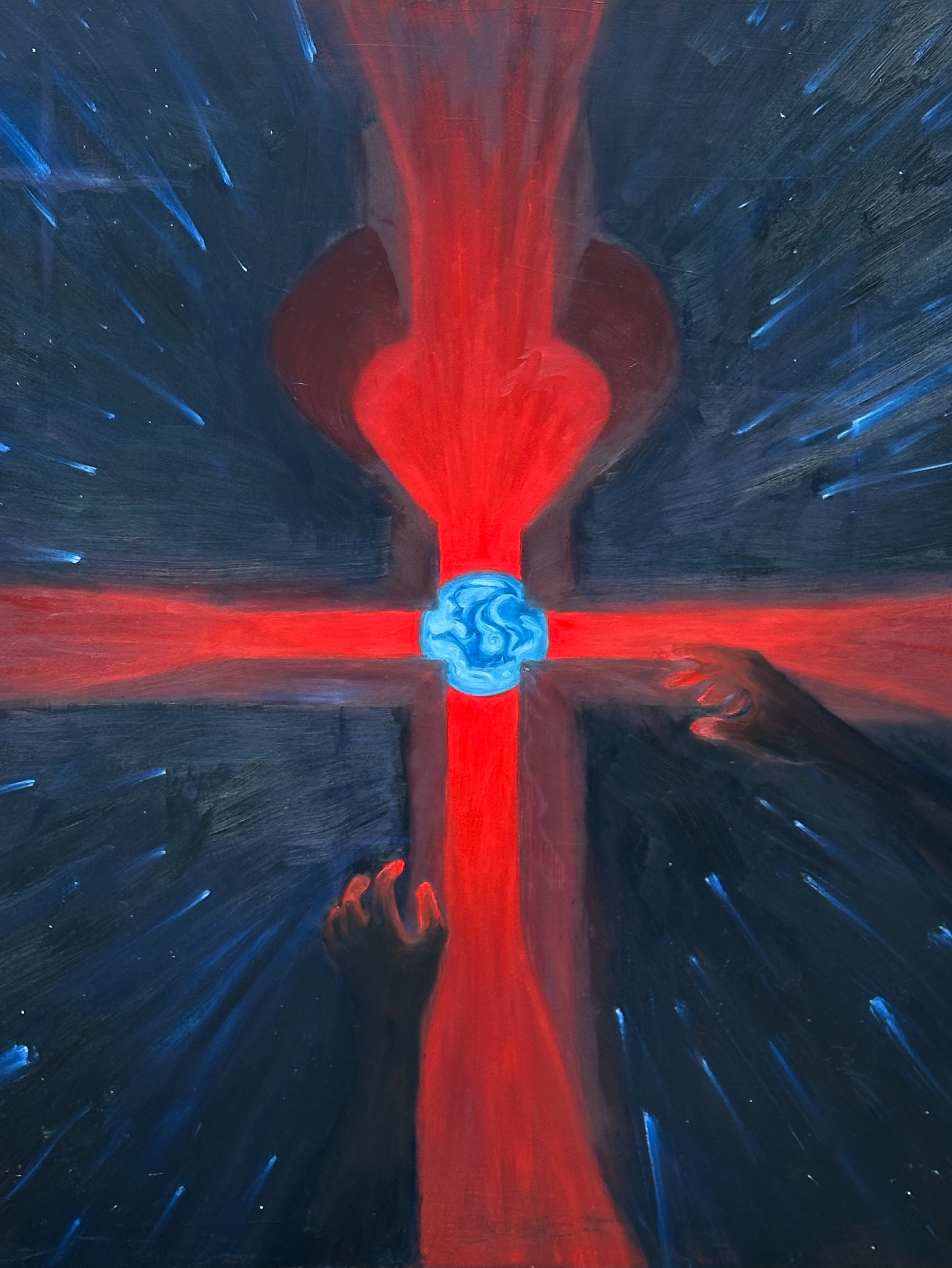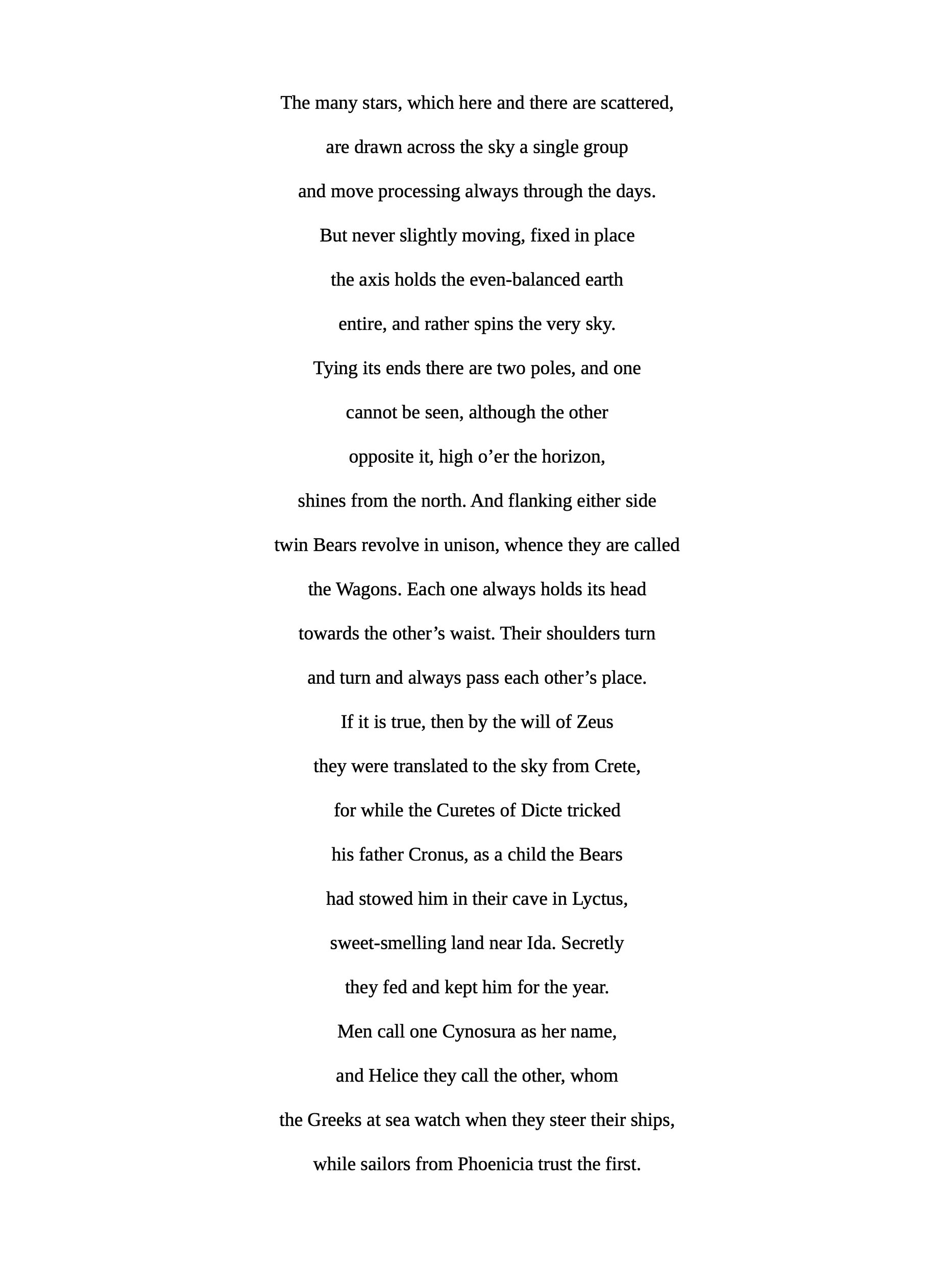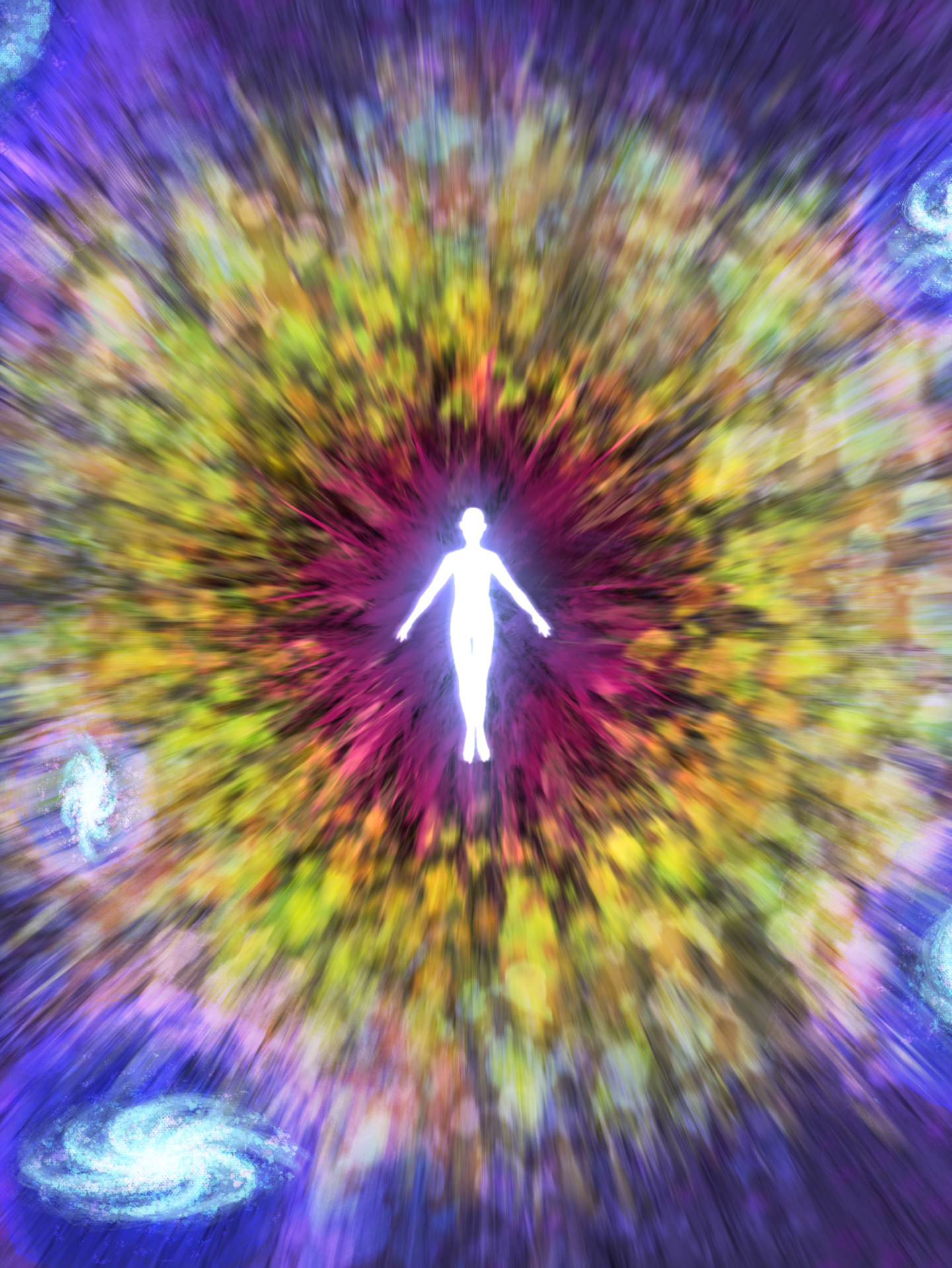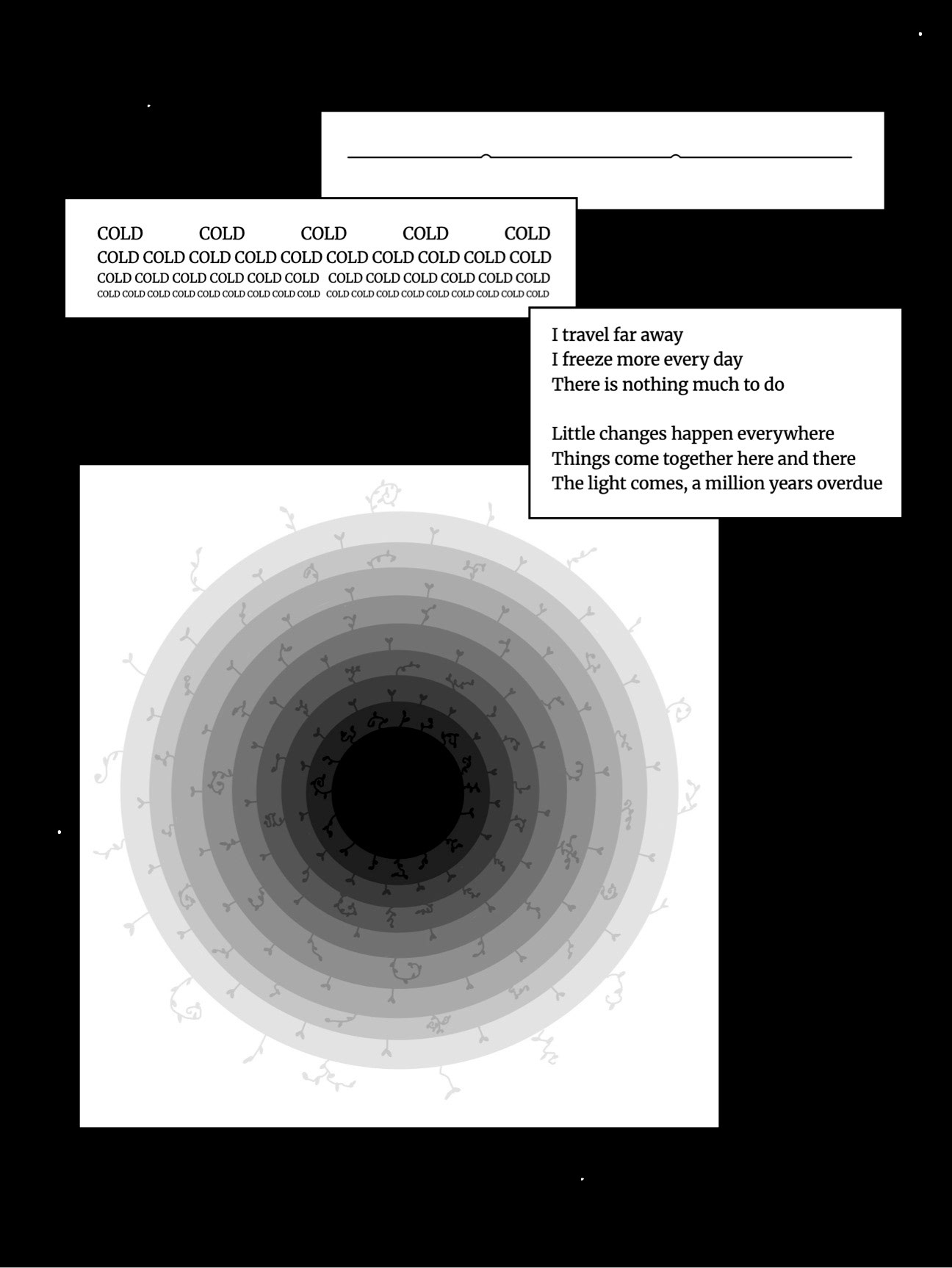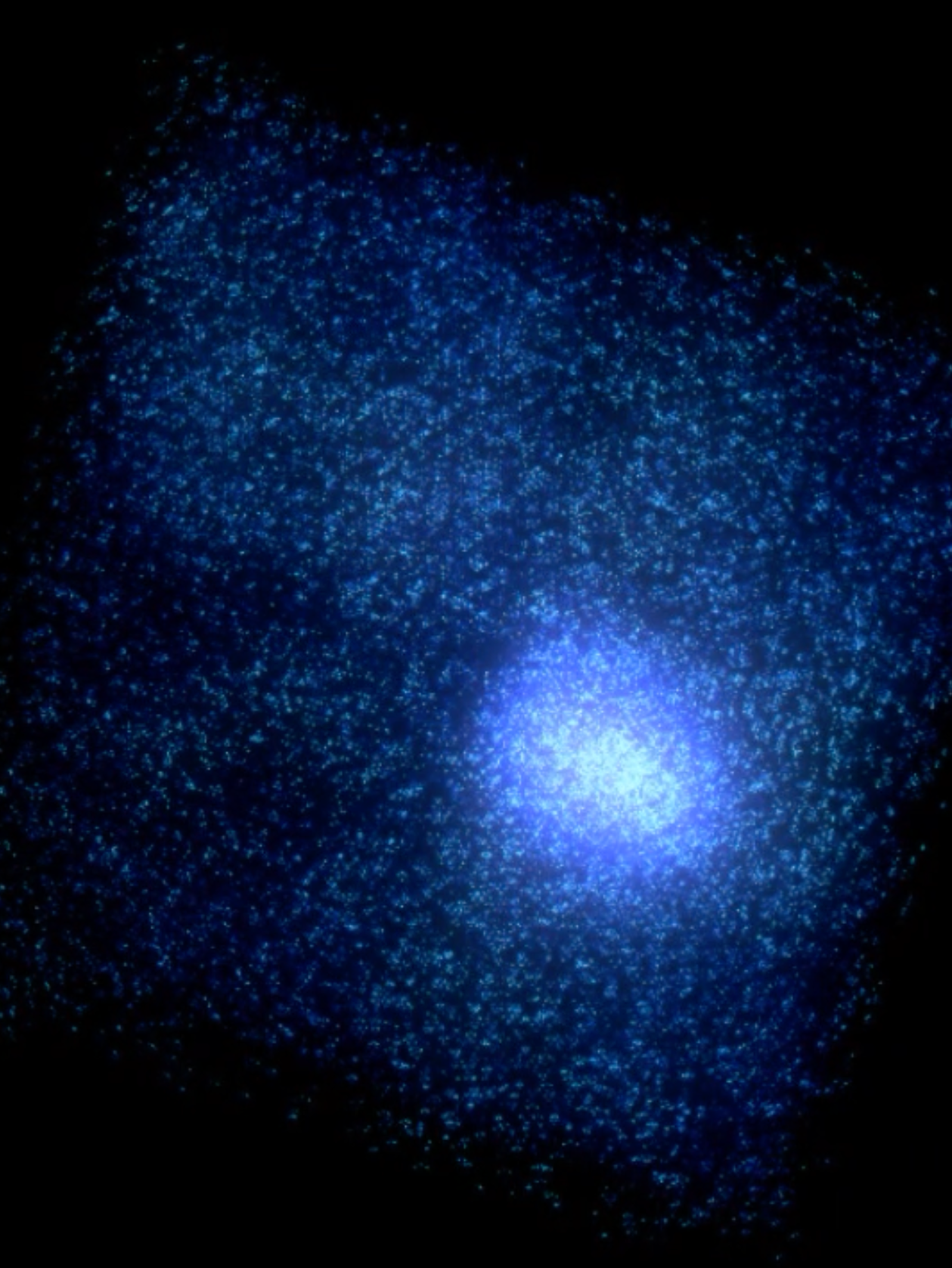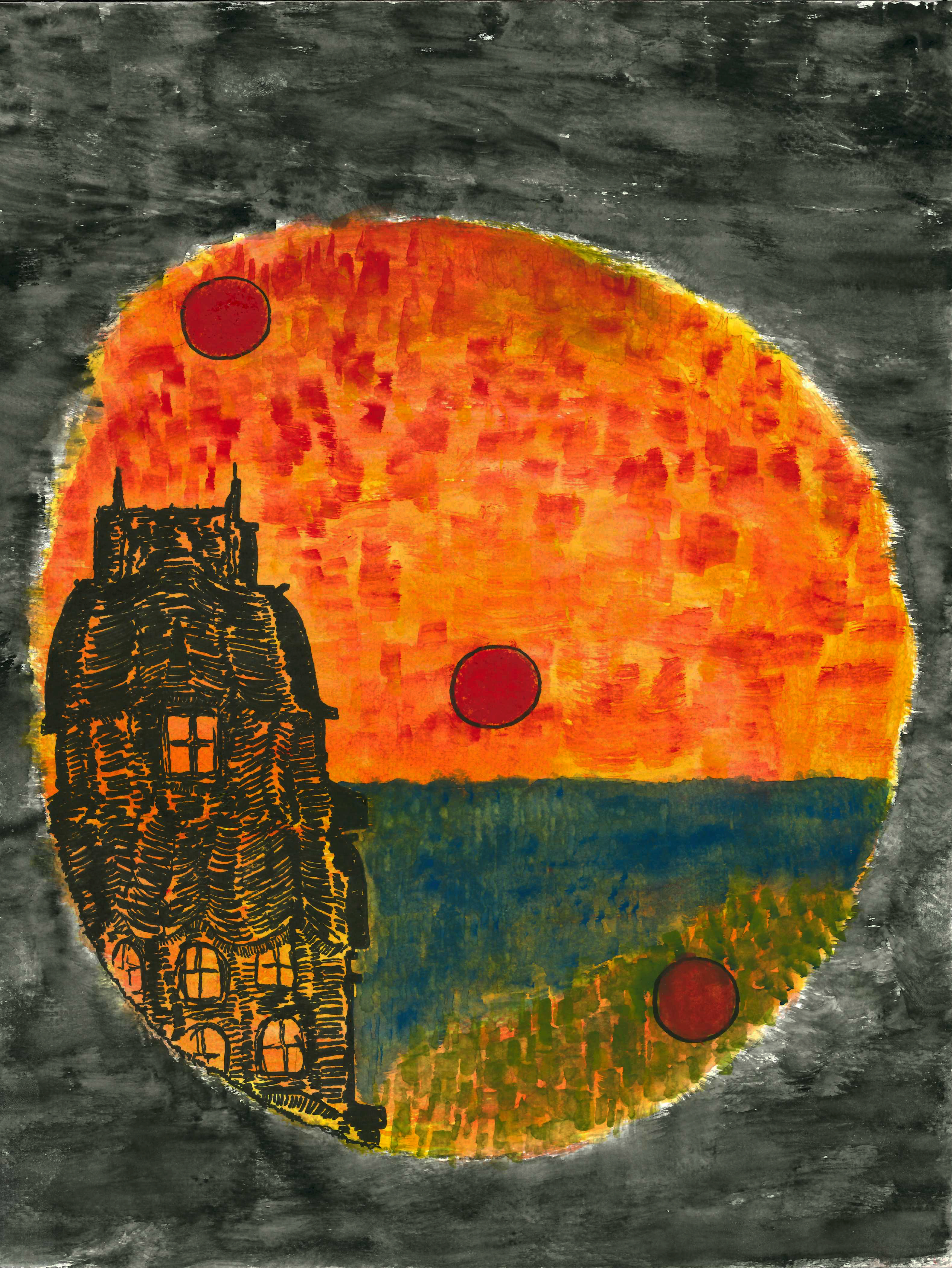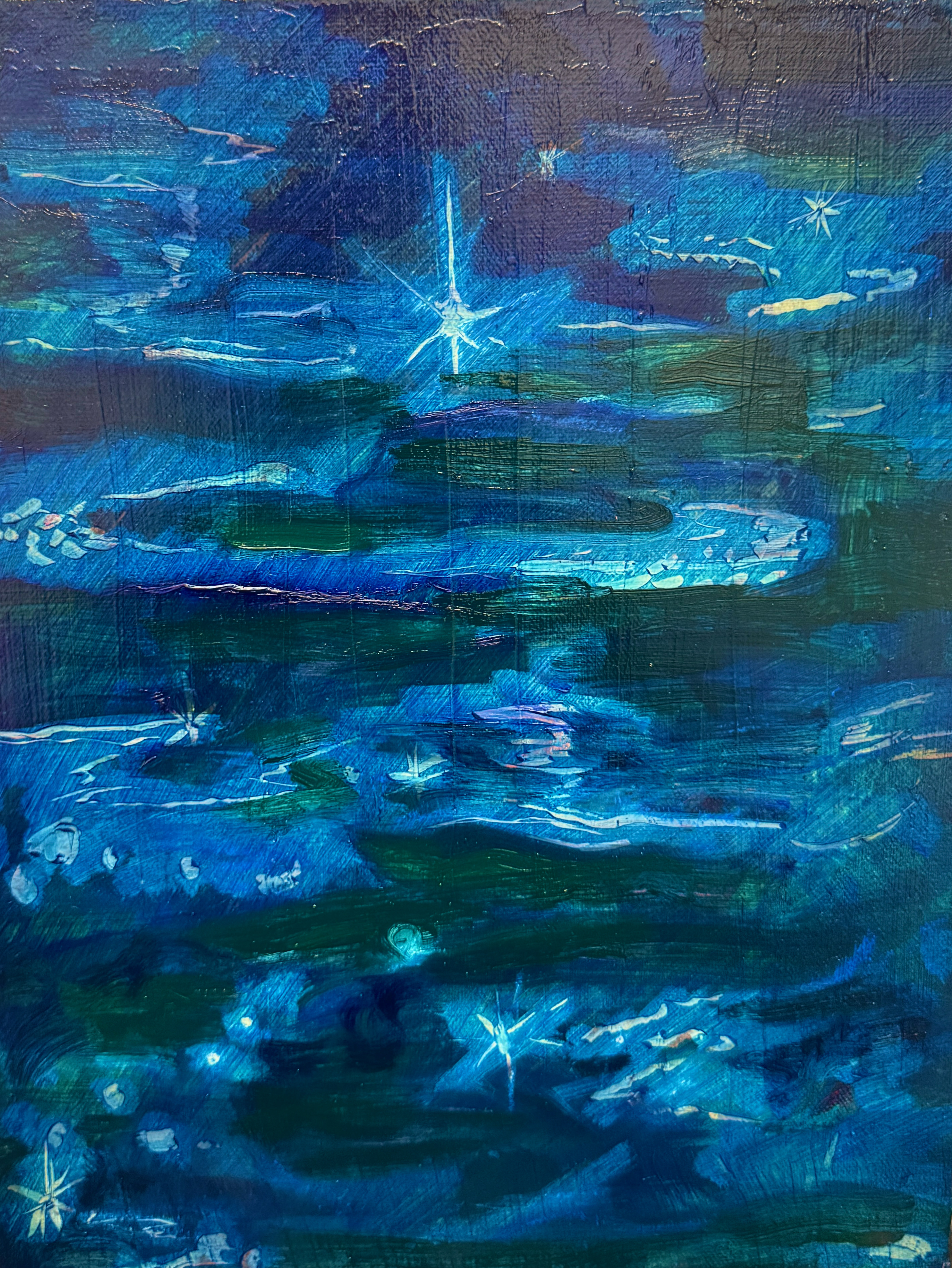Exhibited in Art Among the Stars 2025
Blender Model of a Spiral Galaxy
2025
animation in Blender, 39 sec
printed still, 17.5 x 10 inches
I am specifically exploring the concept of galaxy morphology. The foundation of my work was the astronomical phenomena of spiral galaxies and how they rotate. Spiral galaxies can have multiple arms and for my project, I chose three arms. Spiral galaxies have stars concentrated in the center forming a bulge. The arms are sites of ongoing star formation and contain younger, hotter stars. They include a mix of population 1 and population 2 stars. Spiral galaxies most commonly include barred spirals, our Milky Way is also a barred spiral but it is tough for us to see the bar shape as we cannot image our galaxy from the outside. Spiral and irregular galaxies together make up 60% of galaxies in our universe. Furthermore, galaxies rotate at the same speed instead of following solid body mechanics at the centre and Keplerian rotation around the outer edge/arms. Instead of rotating at different speeds the galaxy rotation courses flattens showing it is at the same speed due to dark matter.
I created a 3D model of a spiral galaxy with a background of stars and nebulae. For the galaxy, I used a cube as my starting point and then built a series of points around it in a spiral pattern to resemble the stars. Each point in the galaxy had a different size and thickness to give it the effect of young/old stars. For the background, I did individual bigger stars. For the background, I had hundreds of tinier stars for which I used multiplication and addition nodes along with Voronoi texture to give the effect of fainter and brighter stars. I also used rough texture to create red and blue “cloud-like” nebulae. For the galaxy, I adjusted the rotation so that it would rotate at the same speed at the centre and arms to make a realistic effect.
Devanshi Singh
Astronomy and Physics Departments, Sophomore
Devanshi is a sophomore double-majoring in Applied Physics and Astronomy, interested in using Blender to create galaxy simulations. She enjoys merging technology, 3D simulations, and astronomy to explore and communicate complex cosmic phenomena. She values this approach's creative flexibility, where scientific accuracy and visual storytelling intersect. In terms of research, she is exploring different interests in physics and astronomy by working on changepoint detections for gravitational wave data with Dr. Ansel Neunzert at LIGO, PDH laser locking systems for Quantum Ion Traps with Dr. Boris Blinov and Nanophotonics research designing a PCM for a Photon Integrated Chip using SbS on SiC with Dr. Arka Majumdar at the NOISE lab at UW Seattle.
